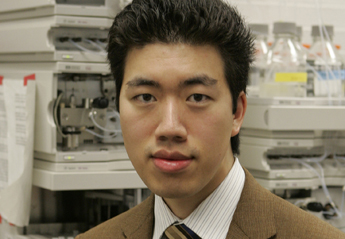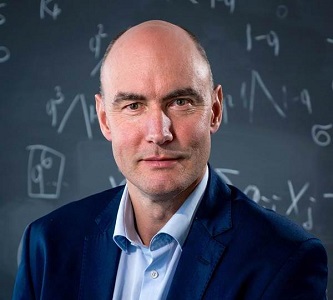 The search for an explanation for the origin of life started long before the publication of Charles Darwin’s Origin of Species in 1859. The first naturalistic theory of life arising from non-life, known as spontaneous generation, is attributable to Aristotle and ancient Greek philosophy.
The search for an explanation for the origin of life started long before the publication of Charles Darwin’s Origin of Species in 1859. The first naturalistic theory of life arising from non-life, known as spontaneous generation, is attributable to Aristotle and ancient Greek philosophy.
Darwin rejected the Genesis account of creation written by Moses. Lingering doubts over the origins of life, however, forced Darwin to reject atheism and embrace agnosticism –
“The mystery of the beginning of all things is insoluble by us, and I, for one, must be content to remain an Agnostic.”
Since then, the race for the origin of life continues. Exciting initiatives to answer Darwin’s lingering “mystery” have been launched. With a line drawn in the sand, the race is on with two major contenders vying for the discovery.
Harvard University
In 2005, Harvard University started an annual fund for the origin of life research with $1 million. At the time, team leader David R Liu (pictured right), professor of chemistry and chemical biology at Harvard, speculated on the  outcome –
outcome –
“My expectation is that we will be able to reduce this to a very simple series of logical events that could have taken place with no divine intervention.”
 Early this month, seven years after launching the initial Harvard program, now known as the Program for Evolutionary Dynamics, they finally announced to The Jeffrey Epstein Foundation, their current main financial sponsor, that they were close to understanding the link between chemical kinetics and when life takes over.
Early this month, seven years after launching the initial Harvard program, now known as the Program for Evolutionary Dynamics, they finally announced to The Jeffrey Epstein Foundation, their current main financial sponsor, that they were close to understanding the link between chemical kinetics and when life takes over.
The Harvard program, now directed by Professor Martin Nowak (pictured left), has researched to explore the popular RNA world model of the origin of life theory. Nowak recently, however, highlighted the primary hurdle the research team has encountered –
“Many events need to occur for molecules to become more sustainable.”
RNA World, Harry Lonsdale
Now, a new contender in the race for the origin of life theory has emerged on the West Coast. The once political darling of environmentalists, philanthropist Harry Lonsdale, is narrowing the search to find three winners for his “Origin of Life Challenge: How did life begin” competition.
An award of $50,000 will be given to the best proposal with the potential for an additional $2 million. Lonsdale began accepting applications in July 2011, with a final deadline of December 31, 2011. Applicants were charged with specific guidelines –
“The proposal should take into account the conditions, materials, and energy sources believed to have existed on the prebiotic Earth. Submission should provide a cogent hypothesis for how life first arose, including its plausible chemistry, and for how primitive life could have evolved to modern biological cells, including the present genetic material and metabolism.”
In the search, Lonsdale narrowed the contest to three research teams, seven people on three different teams, and seven institutions.
When asked in an interview with journalist Suzan Mazur concerning what the winning theoretical model should look like, Lonsdale said that the winning papers should be “based on the RNA world” model. Upon further questioning by Mazur about the quality of the proposals, Lonsdale lamented –
“I must say I was very much underwhelmed by the breadth of their proposals. Even the experts I gathered in San Diego a month or so ago don’t have a single clear model of how life began. There’s no universal agreement.”
RNA World Critics
The RNA world theory for the origin of life has circulated for at least four decades, with scientists lining up on both sides. Theoretical biologist and complex systems researcher Stuart Kauffman of the University of Vermont is an RNA critic, along with Freeman Dyson, a physicist at the Institute for Advanced Studies in Princeton.
For the University of California, Santa Cruz, chemistry professor David Deamer, the theory that RNA could have catalyzed and evolved outside the barrier of a cell membrane is untenable. The late Stanley Miller had argued that the RNA world would be “unlikely” in his early Earth’s high-temperature theory.
Other RNA world critics include New York University chemist Robert Shapiro, Dean Kenyon San of Francisco State University, Gordon C Mills of the University of Texas, Hubert Yockey of the University of California at Berkeley, Gerald F. Joyce of the Research Institute of Scripps Clinic, and Leslie Orgel from Oxford University.
Francis Crick, the discoverer of the DNA structure, commented on the RNA world model in 1980 –
“An honest man, armed with all the knowledge available to us now, could only state that in some sense, the origin of life appears at the moment to be almost a miracle, so many are the conditions which would have had to be satisfied to get it going.”
Genesis
An explanation for the origin of life was a dilemma for Darwin. After 150 years since the publication of The Origin of Species, the race for the origin of life theory is more problematic than ever. The origin of life is compatible with the Genesis account written by Moses.
Sir Isaac Newton, an English physicist and mathematician, now widely recognized as one of the most influential scientists of all time and a key figure in the scientific revolution, commented on the challenges surrounding the origin of life –
“How came the Bodies of Animals to be contrived with so much Art, and for what ends were their several parts? Was the Eye contrived without Skill in Opticks, and the Ear without Knowledge of Sounds? … And these things being rightly dispatch’d, does it not appear from Phaenomena that there is a Being incorporeal, living, intelligent omnipresent…”
Developing a scientific consensus underscores why the theory of evolution remains speculative but not scientifically valid.
Race for the Origin of Life Theory is a Theory and Consensus article.
Darwin Then and Now is an educational resource on the intersection of evolution and science, highlighting the ongoing challenges to the theory of evolution.
Move On
Explore how to understand twenty-first-century concepts of evolution further using the following links –
-
- The Understanding Evolution category showcases how varying historical study approaches to evolution have led to varying conclusions. Subcategories include –
- Studying Evolution explains how key evolution terms and concepts have changed since the 1958 publication of The Origin of Species.
- What is Science explains Charles Darwin’s approach to science and how modern science approaches can be applied for different investigative purposes.
- Evolution and Science feature study articles on how scientific evidence influences the current understanding of evolution.
- Theory and Consensus feature articles on the historical timelines of the theory and Natural Selection.
- The Biography of Charles Darwin category showcases relevant aspects of his life.
- The Glossary defines terms used in studying the theory of biological evolution.
- The Understanding Evolution category showcases how varying historical study approaches to evolution have led to varying conclusions. Subcategories include –
Postscript
Winner of Origins of Life Challenge Announced
June 6, 2012
Introduction
In mid-2011, retired California chemist and entrepreneur Harry Lonsdale issued a challenge to the origin of life science community to come up with novel ideas for explaining the mechanism of life’s origin through the Origin of Life Challenge.
Winner 1
Co-winners of the $50,000 prize in response to the Origin of Life Challenge were two British chemists, John Sutherland at the Medical Research Council Laboratory in Molecular Biology, Cambridge, and Matthew Powner at University College, London. They also received a $150,000 one-year grant to pursue their research in the field.
The Sutherland-Powner team focuses on understanding the chemistry of the replication mechanism that gave rise to the first life. All biological replication includes nucleic acid polymers, RNA and DNA, which carry the genetic code. The team seeks to demonstrate the selective generation of the RNA building blocks and other key biological molecules from simple feedstock molecules under the presumed environmental conditions of prebiotic Earth. If successful, the Sutherland-Powner team will have demonstrated how RNA could have emerged from plausible chemical reactions on the early Earth.
Winner 2
A $90,000 one-year grant was awarded to a joint Canadian-U.S. team consisting of Niles Lehman of Portland State University, Portland, Ore.; Peter Unrau of Simon Fraser University, Burnaby, British Columbia, Canada; and Paul Higgs of McMaster University, Hamilton, Ontario, Canada. In 2019, Niles Lehman faced charges on 35 counts of child porn.
The Lehman-Unrau-Higgs team plans to mix large pools containing small fragments of non-functional RNA under a range of plausible prebiotic conditions. They will be looking for RNAs capable of copying themselves, as well as catalyzing other critical biochemical reactions. If successful, they will have demonstrated the transition from “dead” chemicals to a living state of autonomous replication.
Winner 3
A third, $60,000 grant was made to the team of Wenonah Vercoutere of NASA Ames Research Center, Moffett Field, Calif., and David Deamer at the University of California, Santa Cruz. That team will attempt to demonstrate how simple molecules called nucleotides can polymerize to form RNA when they are organized within membranous structures and exposed to conditions simulating volcanic hot springs. If successful, they will have shown how proto-cells containing RNA could have been produced in the prebiotic environment.
Lonsdale Comments
“These researchers are among the best in the world, and I am excited to see the results of their work,” Lonsdale said.
“Ultimately, it is my hope that within a decade or two, the fruits of this research will help provide answers to the origin of life question and that a rational model for life’s origin will be taught in every biology classroom in the world.”
Krauss said the Origin of Life Challenge grants fit perfectly into the mission of the Origins Project at ASU, which is to ask the big questions. “The Origins Project is thrilled to partner with Harry Lonsdale to further his remarkable vision of pushing forward the frontiers of our understanding of life’s origin,” Krauss explained.
“It is my hope that these awards will motivate others to contribute support for investigating the important foundational questions that drive the Origins Project and, more broadly, fundamental science everywhere.”


